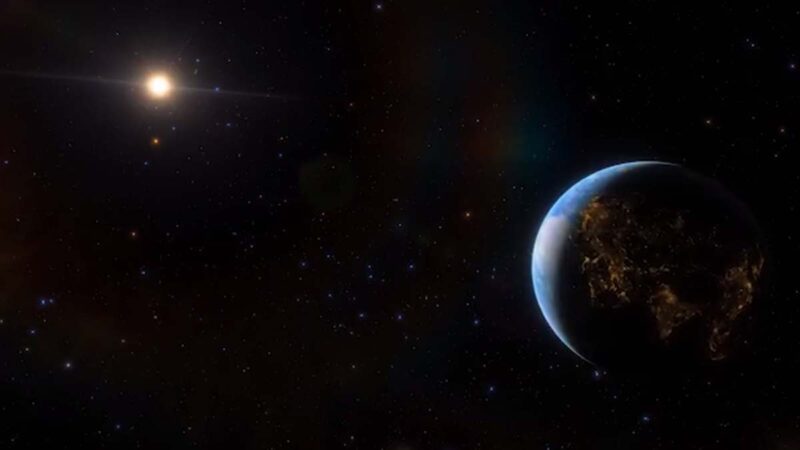[NTD News December 10, 2021 Beijing time]Scientists have discovered a huge “alien world” 11 times larger than Jupiter. The planet orbits two bright stars. This new discovery has sparked speculations among scientists about the formation and evolution of planets.
A new study published in the journal Nature on Wednesday (December 8) shows that this mysterious new giant gaseous planet is located in the constellation Centaurus (Centaurus constellation) approximately 325 light-years away (from Earth). One of the heaviest planets ever discovered.
According to research, this planet, named Centauri b, was discovered orbiting Centauri. Centaurus is a binary star system with two stars (Alpha Centauri and Beta Centauri), and the mass is at least 6 times that of the sun. It is the hottest and largest planet-bearing system known to date.
Astronomers say that until now, no planets have been found orbiting a star three times the size of the sun, making Centaurus the largest system ever found to be surrounded by planets.
The study’s co-author and Stockholm University doctoral student Gayathri Viswanath said in a statement: “B Centaur is an extraterrestrial world whose environment is similar to ours. What is understood in the earth and the solar system is completely different.”
“This is a harsh environment, dominated by extreme radiation, everything is bigger than we know-bigger stars, bigger planets, and farther away.” Viswanath added.
1/ Our Very Large Telescope has captured a direct image of a planet orbiting b Centauri the hottest and most massive planet-hosting star pair found to date!
? https://t.co/jM8TQVyZgB
Credit: @THAT / Janson et al. pic.twitter.com/5Dx18AyUEa
– THAT (@ESO) December 8, 2021
Another collaborator, astronomer Markus Janson of Stockholm University, said: “It is very exciting to find a planet around the Centaur constellation because it completely breaks through (people’s) big picture. The concept of mass stars as planetary hosts.”
The host star in this system is a so-called B-type star (that is, a star of spectral type B), which has a temperature more than three times that of the sun and is very bright. Because of its intense high temperature, astronomers say it emits a lot of ultraviolet and X-rays, which should play a role in the formation of planet B Centauri.
Dr. Jensen said: “B-type stars are generally considered to be quite destructive and dangerous, so people think it should be extremely difficult to form large planets around them.”
But the latest discoveries show that even star systems that emit such intense radiation can support the formation of planets.
Scientists believe that this huge planet’s orbit around the central pair of stars may be the key to its survival.
Its orbit around the star is also one of the widest orbits discovered by the scientific community so far. This amazing distance is 100 times greater than the distance between Jupiter and the sun, and 560 times the distance between the earth and the sun. .
2/ Located 325 light-years away, the two-star system has at least six solar masses and emits high-energy radiation. It was believed planets could not exist around stars this massive and hot — until now.
Illustration credit: @THAT / L. Road pic.twitter.com/rJOQa8wxgh
– THAT (@ESO) December 8, 2021
The scientists wrote in the research report: “The mass ratio of planets to stars is 0.10-0.17%, which is similar to the Jupiter-Sun ratio, but the distance between the detected planets is about 100 times wider than that of Jupiter.”
“Our results show that planets can live in much more massive star systems, not just inferred from previous results,” they added.
This study was conducted from March 2019 to April 2021. The researchers used the SPHERE exoplanet imager installed on the Very Large Telescope of the European Southern Observatory in Chile to make a surprising discovery.
Astronomers pointed out that the planet may not have formed according to the rules. They speculated that it might have formed elsewhere and then reached its current location.
Researchers hope to use the Extremely Large Telescope of the European Southern Observatory to reveal more details about this new planet in the next 10 years.
“We are trying to figure out how it was formed. This is a fascinating project, and it is still a mystery at the moment.” Dr. Jensen said.
(Reporter Xiao Jing compiled the report / Chief Editor: Cheng Feifan)
The URL of this article: https://www.ntdtv.com/b5/2021/12/09/a103289504.html
